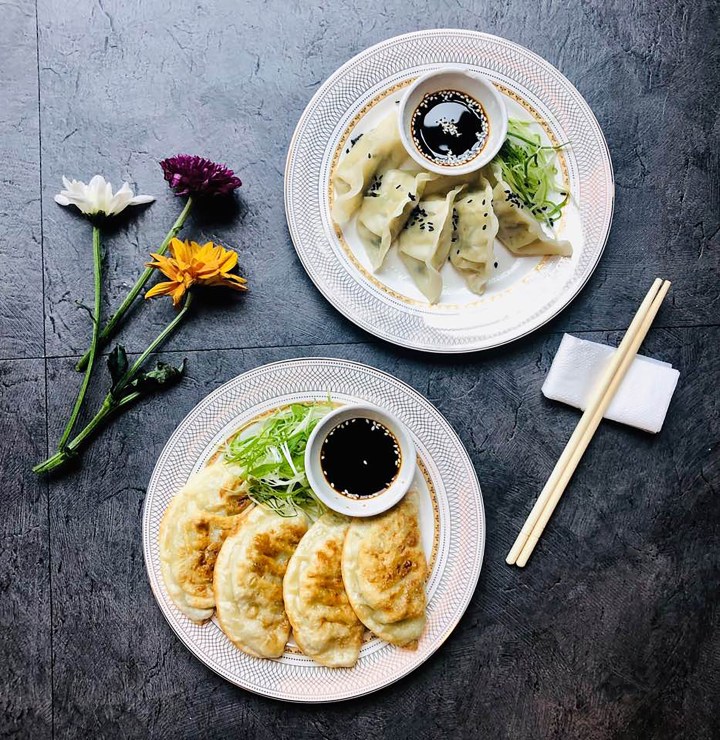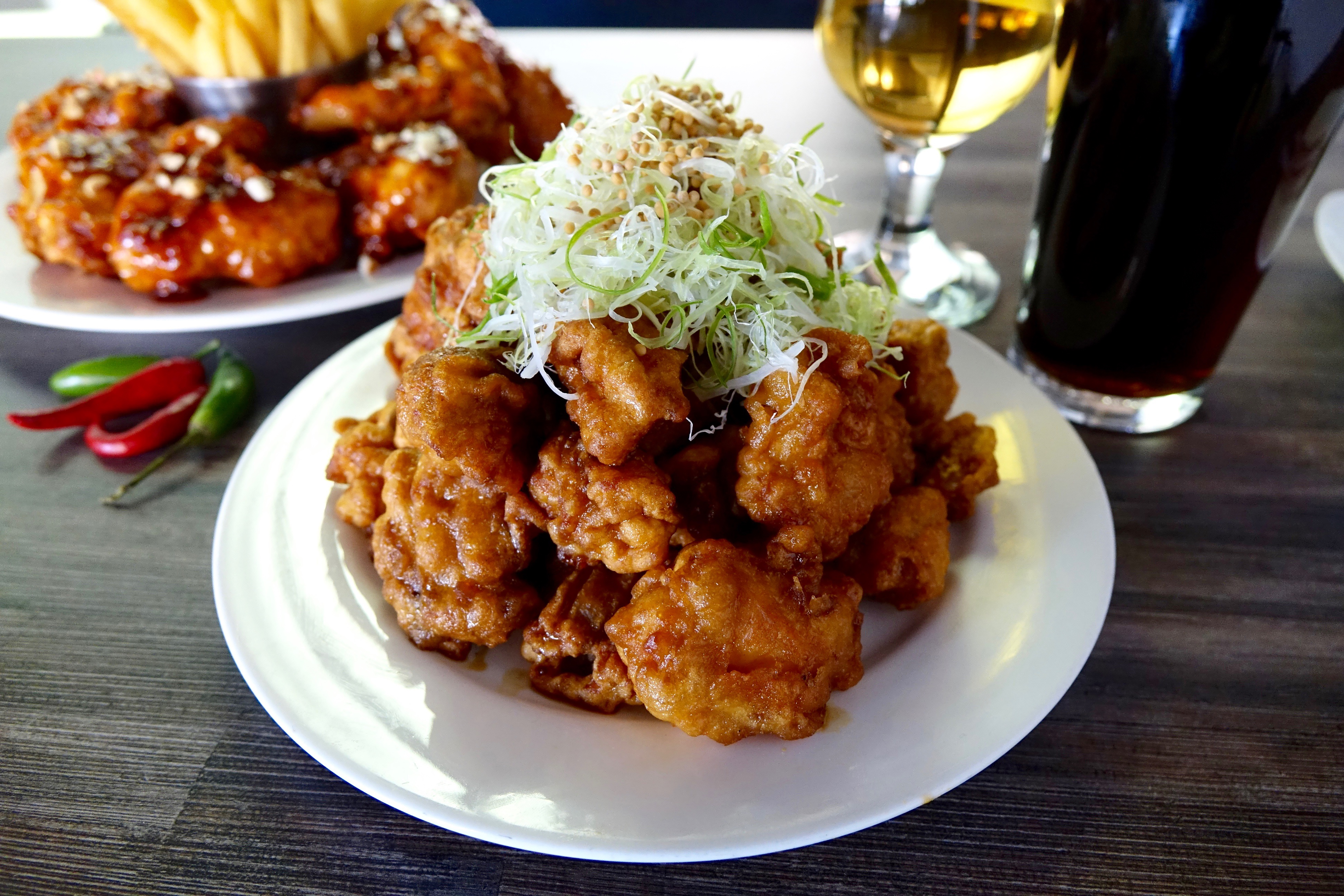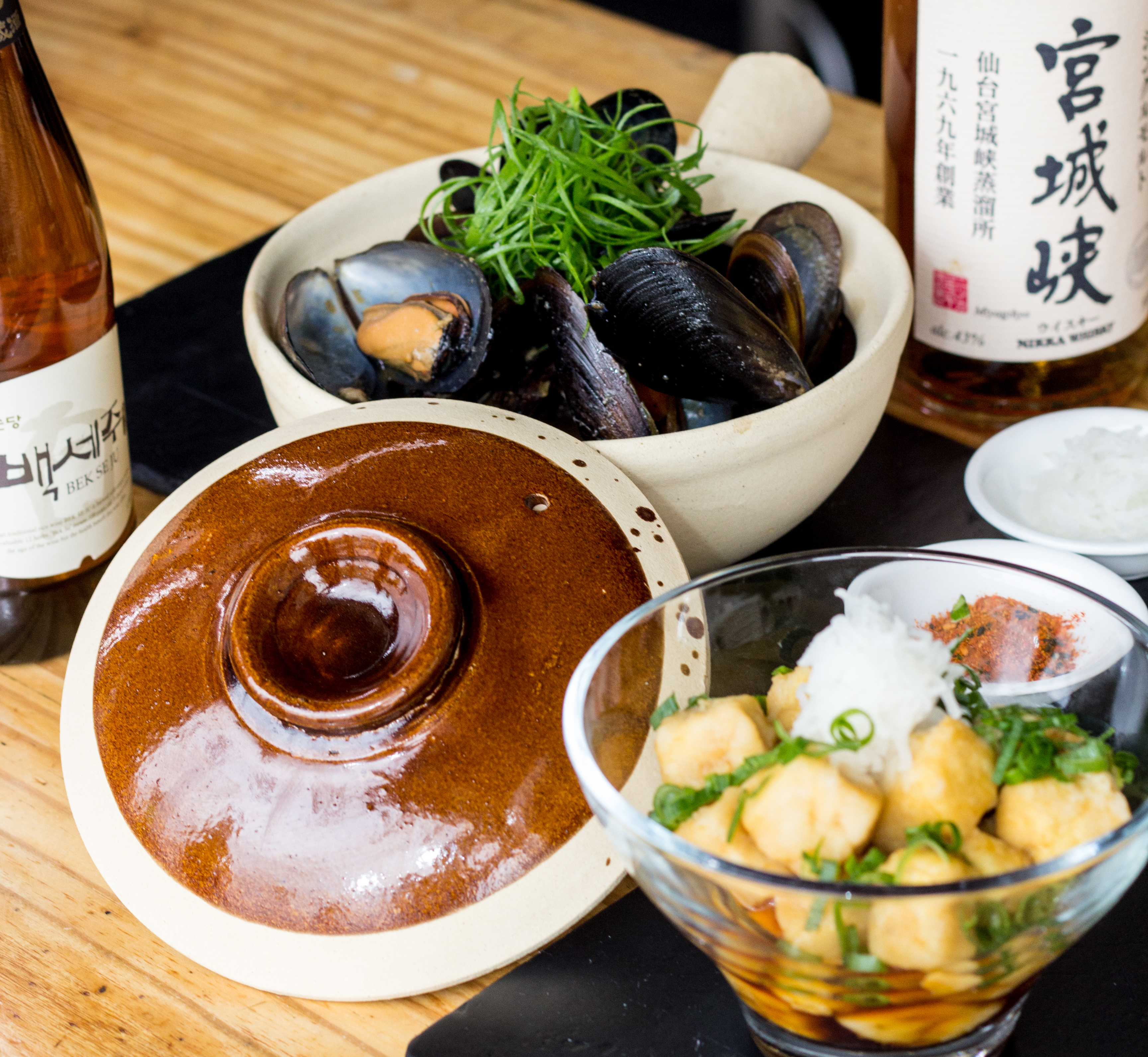FEAST ON THE EAST
Asian Fusion in Jozi: Fab or Faux Pas?

In the last two years, Johannesburg has seen an explosion of Asian Fusion eateries popping up around the city. But it comes with a price. Many of the restaurants have novelty features such as karaoke at Saigon Suzy, flaming sushi at FireRoom, and sushi rolled in what appeared to be crushed NikNaks at Sushi Burrito (which has since closed down).
In Asian countries such as Korea or Japan, each restaurant has its own culinary speciality. In South Africa, Asian restaurant menus feature every dish imaginable, ranging from Japanese sushi to Chinese noodles to Hawaiian poké bowls.
Johannesburg has fantastic Asian Fusion eateries – the key is to distinguish between the fusion restaurants with foolish gimmicks and the ones with great food with a creative twist.
Merelda Wu, a data scientist living in Joburg, was born in Taipei but moved to South Africa at 17.
“Even from 2006 until now, I can see the growth in the amount of Asian restaurants,” says Wu, “the food has also become more mature. Back then there was just Koi, but now there’s all the Momo franchises, there’s Big Mouth in Sandton, etc.”
Wu particularly likes the bowls and bao from Momo Soko which she believes are quite similar to food from home.
For authentic handmade noodles, Wu and her family frequent Shaan Xi restaurant in Edenvale.
“Shaan Xi serves the best noodles. I rarely see anyone there that is not Asian. They don’t even have a white menu. Some of my friends ask me to record on their WhatsApp so they can play it to the owner to order,” says Wu. “You order your food and then you hear them banging noodles on the desk. It’s almost like a traditional pizza place when you see them throwing the pizza,” Wu explains.
Wu is Taiwanese but she loves sushi and recently visited Japan.
“The most frustrating thing for me about sushi in Joburg is the rice. People always get the rice wrong. It’s either super mushy or too hard and I’ve actually tasted rice where it was both – it was too soft but the inside was hard and uncooked.”

Banchan cuisine.
Wu doesn’t mind fusion cuisine, but there are two fusion ingredients she cannot stand.
“I don’t like strawberries and cream cheese on my sushi,” says Wu. YuMe Sushi Bar (and many other sushi bars in Joburg) serves california rolls filled with salmon, strawberries, and cream cheese. Dairy products like cream cheese, milk, and cheeses are unfamiliar to authentic Asian cuisine and many Asian ex-pats shudder at the thought of strawberries and cream cheese near their sashimi.
Not all Asian fusion restaurants are trying to replicate authentic Asian food. The Great Eastern Food Bar in Melville was founded five years ago by Carolina Rasenti and her mother. Rasenti is not a trained chef and has never even been to an Asian country.
“Our food is not authentic at all,” says Rasenti, “we try to bring different flavours from the East, but make it acceptable for our local palate.”
When the restaurant first opened, Rasenti hadn’t eaten meat in 10 years. As a vegetarian, she found it difficult to eat out at Asian restaurants because many dishes would use chicken or beef stock. As a result, she started preparing her own Asian-inspired food at home and so the Great Eastern was born.

Great Eastern cuisine.
Joburg is spoilt for choice when it comes to Korean fried chicken – you can spot it on almost any Asian fusion menu. But what about bibimbap or ddukbaegi bulgogi? You’ll find authentic cuisine (plus a few modern Korean dishes) at Banchan Korean Restaurant in Parkmore. Vanessa Coskey, who lived in Seoul for three years, fondly remembers the local food.
“The street food was amazing. That was your commute food. If you’re catching the train in the snow you’ll grab hot pancakes, or tteokbokki, whatever’s hot,” says Coskey.
Coskey lived in a restaurant district and ate out every day. One of her favourite dishes, which she still enjoys today at Banchan, is samgyeopsal. The name, which literally means three layered flesh, is called as such because the pork belly has three visible layers of fat. You cut the meat into pieces, grill it yourself, and eat straight off the grill.
“No self-respecting Korean restaurant doesn’t have samgyeopsal,” says Coskey.
Jamie Jeong, general manager of Banchan, notes that the Korean BBQ is the most popular attraction at the restaurant. Banchan specialises in authentic Korean food, but has added a few modern and fusion dishes to the menu in the last year. For example: kimchi nachos. Nachos are a far cry from Korean food, but their authentic kimchi is made in-house every two weeks, producing six to nine boxes full at a time.
Verena Lourenço and Nathalia Von Witt lived in Hanoi for two years. They recall the simple, delicious vegan delicacies they enjoyed in the city, like a Vietnamese broth and noodles called pho (but pronounced ‘fuh’).
“In the North, the food is not spicy. It’s not bland, but it’s simple, fresh flavours,” says Lourenço.
Since returning, the couple have tried fusion restaurant Saigon Suzy. Even though the name alludes to Vietnam, most of their dishes, such as the steamed buns, are a blend of food styles.
“Vietnamese bao is different to Taiwanese. The vegetarian ones in Vietnam were closed steamed dumplings and filled with bean paste or pandan leaf,” says Von Witt.
“The bao at Saigon Suzy was really nice, but you wouldn’t get a bao like that in Vietnam. It was filled with tempura cauliflower and lots of sauce,” adds Lourenço.
Von Witt notes that the pho at Saigon Suzy had a flavourful broth but she didn’t enjoy the texture of the crumbed and fried tofu.
“People who don’t eat tofu in their lifestyle like to make tofu exciting,” says Von Witt.
In Hanoi, they enjoyed simple fried tofu in pho, but at Saigon Suzy the crumbed tofu turned into soggy crumbed blobs.
The most poignant tradition in Asian cuisine is the culture of enjoying and savouring food as a group. In Asian cultures, you don’t usually order individual meals, someone orders many dishes and a big bowl of rice for the whole table to share. Restaurants like Banchan or Yamato in Illovo embrace the tradition of slowly preparing and enjoying food at the table. Yamato serves an authentic shabu-shabu: a nabemono hot pot where you cook the meat and vegetables yourself at the table.
Asian fusion cuisine can be honest, creative and delicious food. Even if the ingredients used or the cooking technique isn’t quite authentic, it’s the flavour and eating culture that’s important. If you find a restaurant that embraces the culture of slow, purposeful cooking and eating, it’s well worth a visit. DM




 Become an Insider
Become an Insider